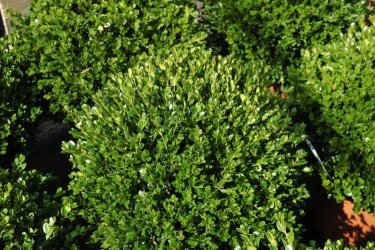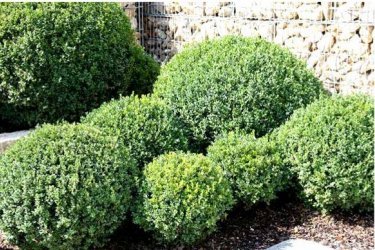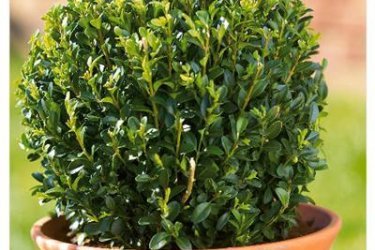Boxwood
Unfortunately, growing boxwood in areas with very cold climates is associated with certain difficulties. In frosty winters, boxwood plantings require shelter; in addition, an evergreen shrub in such conditions is unlikely to grow quickly.
So, it is recommended that only residents of the southern regions attempt to create an evergreen boxwood hedge on their site; other lovers of this noble plant are recommended to grow it as a container plant.
Boxwood in landscape design
The bushes of the plant are quite decorative; small leaves attract with their bright green color and shine; they densely cover the branches.
With proper, frequent trimming of boxwood, skilled gardeners get from it:
- perfect borders;
- hedges of different heights and shapes.
The plant tolerates heavy pruning well.
Some types of boxwood, for example evergreen, or common, in ideal conditions for the plant, i.e. in Mediterranean countries, they can grow like a tree and reach a height of about 10 m. And the Bolearic boxwood can generally grow up to 20 m, its crown is very dense, in nature the plant can take the form of a bush.
To create hedges, different types of common boxwood are often used; without pruning, its bushes can reach a height of 3 m.
Sometimes more compact, dwarf varieties are used; they border flower beds and paths.
Small-leaved boxwood, what care does it require?
The plant is not demanding on the type of soil and light intensity; it can grow successfully in partial shade and in open space.
To form beautiful bushes, you will need to carry out systematic pruning, from May to August; only such careful attention will allow you to get a neat hedge or beautiful trimmed forms.
Boxwood propagation
The crown of the plant is formed in the summer. Of course, you shouldn’t throw away the cut branches; they can be used as cuttings for propagation. It is recommended to use cuttings about 10 cm long.
Getting seedlings is not at all difficult. For rooting, you will need to create a cool greenhouse; you can place it in the most shaded place in the garden. Care will consist of systematic watering.
Note that the formation of the root system of seedlings may take from several months to a year.
The second, no less simple method of propagation is dividing the bush.
The plant tolerates replanting calmly and can be performed at any age. To form a dense hedge, plant bushes in two rows or in a checkerboard pattern.
First they plan the site on which a hedge will be created, then mark the holes for planting. The distance between them should not be less than 35 cm; dwarf varieties can be planted at a closer distance.
To create even rows, it is recommended to install pegs along their edges and stretch the rope.
You can find out more about the recommended distance between bushes for this variety when purchasing boxwood at a nursery.
During the first year of growth, only one pruning of the bushes will be required. During the second and subsequent years, several prunings are made to activate branching and give the plant the desired shape. It is important to do this until the fence reaches the required height and closes.



